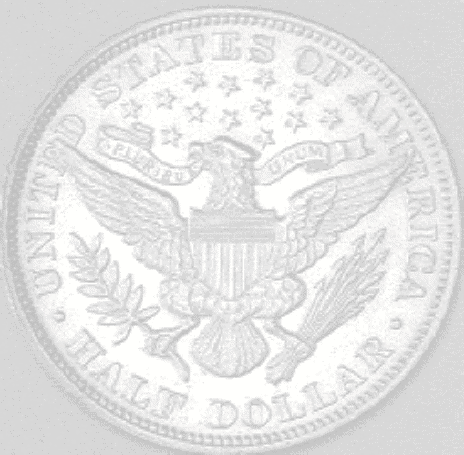
|
|
||
|
|
|
|
|
|
||

-62-
FOR BETTER OR WORSE:
The Railroad Strike
In 1924, when railroad shop men went on strike, interstate commerce was seriously disrupted. Attorney General Harry Daugherty obtained a temporary injunction from Federal Judge J. H. Wilkerson of Chicago forbidding
every conceivable type of strike activity . . . not merely violence, but picketing of al sorts strike meetings, statements to the public, the use of union funds to carry on the strike, and the use of any means of communication by the leaders to direct it (Hicks, 554).
Corporations flourished in the
1920's, but were second to the fury of speculation. A comparatively few
men owned large corporations, and a handful of men owned the majority of
stocks.
Speculation rose as a spectre in society warning of things to
come. The prices fixed for given stocks was often reprehensible when
compared to their "earning power." Mr. Hicks declares, "Valuations equal
to 25 times the interest returns were by no means uncommon (Hicks, 584)
. . .. An issue never known to pay a dividend climbed steadily from 40
"dollars" to 450 "dollars" a share" (Hicks, 585). Yet, Mr. Charles
Mitchell, President of the National City Bank of New York declared only
2 days before the stock market crashed, "I know of nothing fundamentally
wrong with the stock market or with the underlying business and credit
structures" (Hicks, 585).
The Collapse of the Stock Market
In October 1929, the stock
market collapsed. On Thursday, October 24th 12,800,000 shares changed
hands (Hicks, 585). During the next 3 years, the market reached 9 "new
low" levels (Hicks, 585). The "value" of stocks fell from 87,000,000,000
"dollars" on October 1, 1929 to 19,000,000,000 "dollars" on March 1,
1933 (Hicks, 585).
In describing what ensued, Mr. Hicks declares,
Prices dropped sharply; foreign trade fell off; factories cut production, or closed down completely; real-estate values declined; new construction, except on government works, practically ceased; banks went under; worst of all, wages were cut drastically and unemployment figures began to mount. By the end of 1930, about 6 or 7,000,000 workers were out of jobs. Two years later, the number had doubled (Hicks, 586). *
* Mr. Hicks here makes two fundamental errors. "Prices" and "values" did not actually drop. Inflation is the result of a system of changeable values in weights and measures. This applies to coinage as well as to paper "money." When the Federal Reserve Bank of Chicago admits "intrinsically, a dollar bill is just a piece of paper," it ought to be sufficiently clear that paper "money" is not "inflationary", but is "inflation" itself.
"Causes” of the Great "Depression"
Mr. Hicks lists the causes of the “Depression” as 1.) Agricultural over-expansion --"American farmers produced more wheat, cotton, corn, livestock, and other commodities than they could sell at satisfactory prices" (Hicks, 586). 2.) Industrial overexpansion -- "American industry was geared to produce more than it could sell" (Hicks, 586). 3.) The increasing effectiveness of machines -- "ingenious labor-saving devices made possible greater production with comparatively less labor." " ...The buying power of labor was diminished" (Hicks, 587). 4.) Capital surpluses --Frank Vanderlip declared, "Capital kept too much and labor did not have enough to buy its share of things" (Hicks, 587). 5.) The overexpansion of credit -- "It was too easy to borrow . . .. There was too much installment buying . . .too much of the national income was diverted into interest payments. Purchasers cheerfully mortgaged their futures to obtain goods that would often be consumed before they could be paid for” (Hicks, 587-88). 6.) International trade was out of balance. And 7.) Political unrest pervaded throughout the world. Mr. Hicks mentions both "inter-government debt" and the fact “most countries were over burdened with governmental debts” (588). *
* Mr. Hicks once again is guilty of
fundamental error. The reason for the collapse of the stock market is
not to be found in the free enterprise system. Over-production causes
competitive prices, and genius as evidenced in automation is a gift from
God, and should not be stifled.
Although man is by nature a creature of greed, yet the tyranny of
greed is fostered by a dishonest system of weights and measures.
International trade and political unrest cannot wrest peace and
tranquility from a nation that lives in obedience to God's Law of a just
and perfect weight and measure. Nor can people who live by credit enjoy
the liberties of a free people. Such people have been warned that "The
borrower is servant to the lender." (Proverbs 22:7) Therefore God
commanded, "Owe no man anything." (Romans 13:8)
What is most interesting is the fact Mr. Hicks leaves unnoticed the
single most significant cause of the Panic --paper "money." The system
of weights and measures that is forever being manipulated by Congress is
at the heart of the nation's economic problems, and, the "Great
Depression" as it is called is only a forewarning of things to come.
On March 6, 1933, President
Roosevelt issued an order prohibiting banks from paying out gold and
gold certificates without permission (Yeoman, 12). Gold currency was now
to be kept for reserves. Gold imports and newly mined domestic gold had
to be sold to the government. With threats of fines and imprisonment,
people were coerced into surrendering their gold (Wilber, 13). It was
Adolph Hitler who said, "Gold in the hands of the people is the enemy of
the state" (Wilber, 25). It was not until 1975 that the restrictions on
holding gold were removed (Yeoman, 12), forty-three years after Congress
ceased minting gold coins for general circulation.
